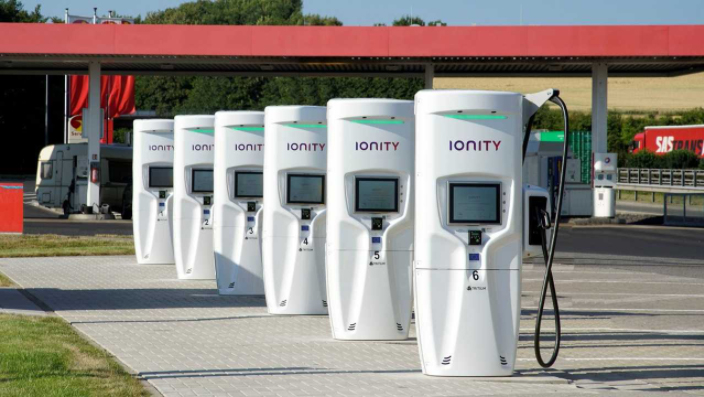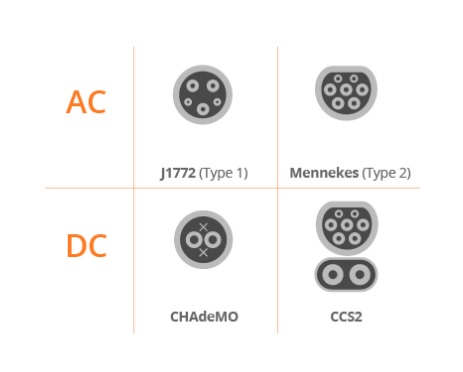What is the best solution to charge your electric car?
Nowadays, electric cars are becoming more common, but how, and how fast can they be charged? There are many methods and designs for this purpose.
Plug-in charging
The first method is charging from a simple 230V wall socket. In this case, the electric car is connected directly to the grid. Nowadays, this solution has wholly disappeared. It is slow and dangerous as the charger does not communicate with the vehicle. 2 kW (8 A) is the maximum charging rate, resulting in a 40–60-hour charge time for modern vehicles.
Electric Vehicle Supply Equipment
EVSE (Electric Vehicle Supply Equipment) is a small box on a cable that acts as a rectifier and fuse. It is usually provided by manufacturers as a standard accessory for new cars, and allows home charging. The charging time is 14-16 hours. Therefore, it is not a fast solution either, with a maximum charging speed of only 2.3 kW (10 A). However,EVSE is significantly safer than plug-in charging as it has built-in protection.
Wall-mounted fast chargers, charging points
This is the optimal solution for home charging. Such solutions are offered by SolaX or Fronius.
It has an AC input like the first two, but these are most often three-phase chargers (there are also single-phase versions). They are always permanently connected to the mains. These chargers are now also used for public charging. They are a popular and standard charger in shopping centres and office buildings because they do not require complex network development or other costly preparations. They are available in two designs:
-
-
-
- Fixed cable design
- Fixed cable-free design, with socket only
-
-
The advantage of the socket-only version is that you can quickly use your own cable anywhere, as the socket for AC fast chargers is standardised throughout Europe, and so is Type 2 (IEC 62196). For older (pre-2015) and American cars, Type 1 is the most common socket, for all other cases, Type 2 is the most common. With a fast charger, charging speeds of up to 22 kW (3×32 A) can be achieved. This can only be limited by the car’s charge controller, if it does not support such high current AC charging or is not three-phase. Charging time is 4-9 hours.
DC charging
So far, we have discussed AC 230-400V charging, but DC charging has the advantage of charging at high voltages up to 1000V with a current draw of 150-400A. Unlike the previous approach, charging is no longer done via the vehicle’s charge controller, but through a functionally different charge controller. These are large, expensive, and complex devices and are, therefore, not found in households, only and exclusively at community charging points. They are most often found next to motorways and petrol stations. With DC rapid charging, you can never use your own cable, it is always attached to the charging port. The cables are heavy, robust, and thick because of the high current. Unfortunately, not all cars support this charging feature. Most of the time, it is an optional choice, not included in the basic models. This solution also has some disadvantages: the high current consumption can significantly accelerate the degradation of the batteries, reducing their capacity faster than normal. They are best used on long journeys to protect your vehicle. Charging time is only 20-40 minutes, up to 80% charge. Due to the nature of the batteries in use today, the last 20% takes about the same amount of time because the cells cannot charge as fast. The last 20% is mainly spent balancing the cells.
Charging connections
For AC charging, Type 2 connectors are used in almost all cases. For cars with Type 1 sockets, there is also the possibility to charge with a Type 1 – Type 2 cable. For DC, there are several solutions. The CHAdeMO, mainly used in Japan, has the advantage of bi-directional charging. This means that with the proper infrastructure, our car’s battery can supply the consumption of a house (Vehicle to Grid). The Nissan Leaf is the vehicle where such connectors are most often found. CHAdeMO means ocha demo ikagadesu ka, translating to English as “How about a cup of tea?” in reference to the fast charging time. In addition to CHAdeMO, there is always another connection on the car, usually Type 2. The quick charge connector used in Europe is CCS, also known as Combo. These are combined connectors with Type 2. They are similar in design to Type 2, but with two additional high-current connectors. There is also a Type 1 design, but this is not common. Combo chargers may be called Combo1 or Combo2, depending on the socket on the top.
The selection of EV chargers is constantly growing and rapidly improving. In the Solarity portfolio, you can find chargers from Fronius, SolarEdge, Solax Power and Wallbox. We strive to find and provide the best options for you and your customers. If you need help choosing the right EV charging solution, contact our sales representatives or technical support specialists.

Subscribe to our newsletter
so that you don’t miss any news!












